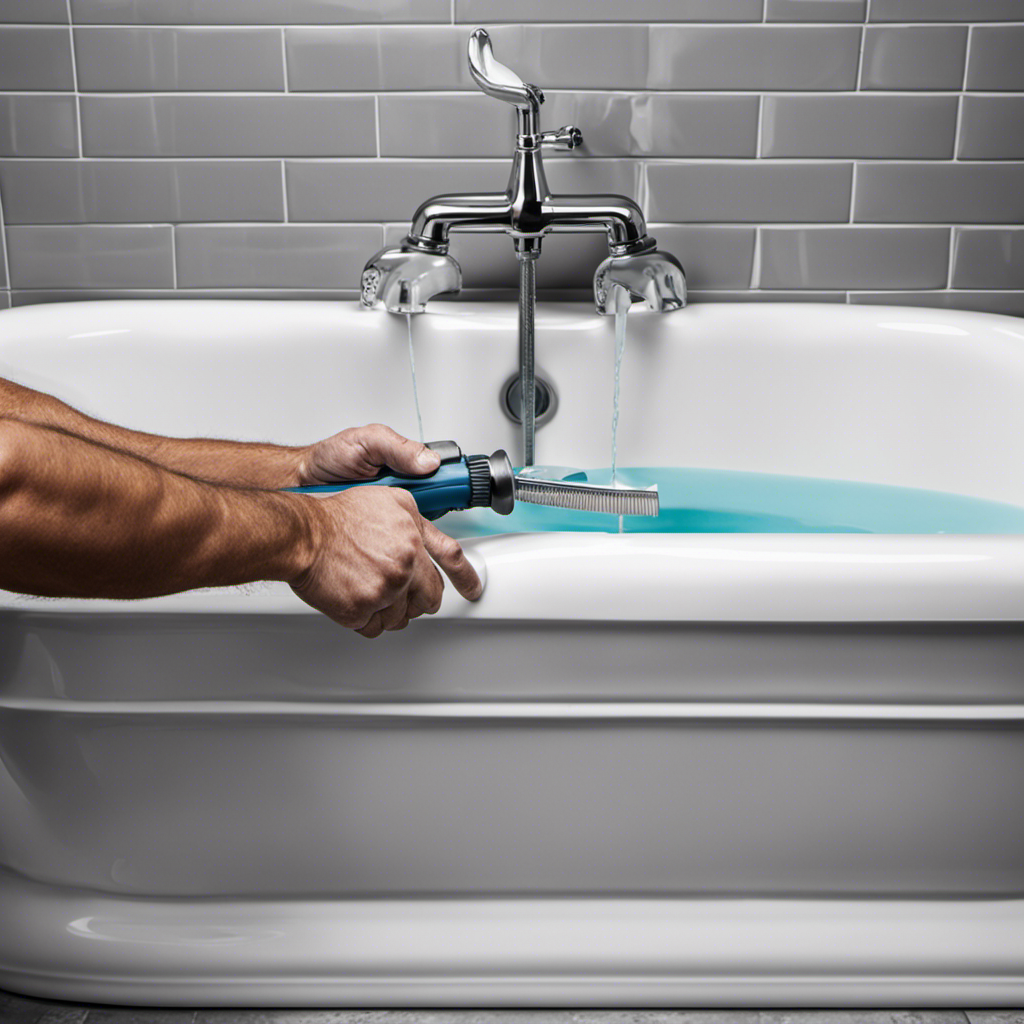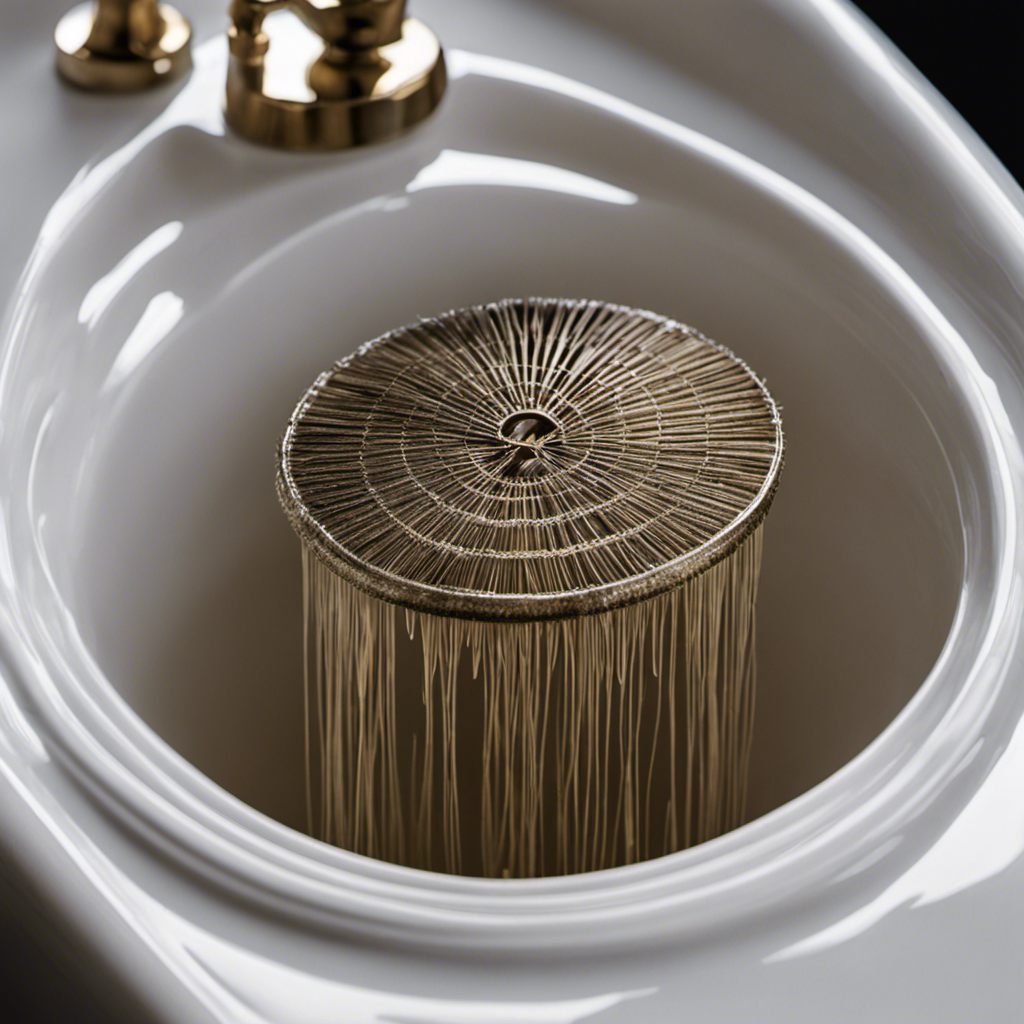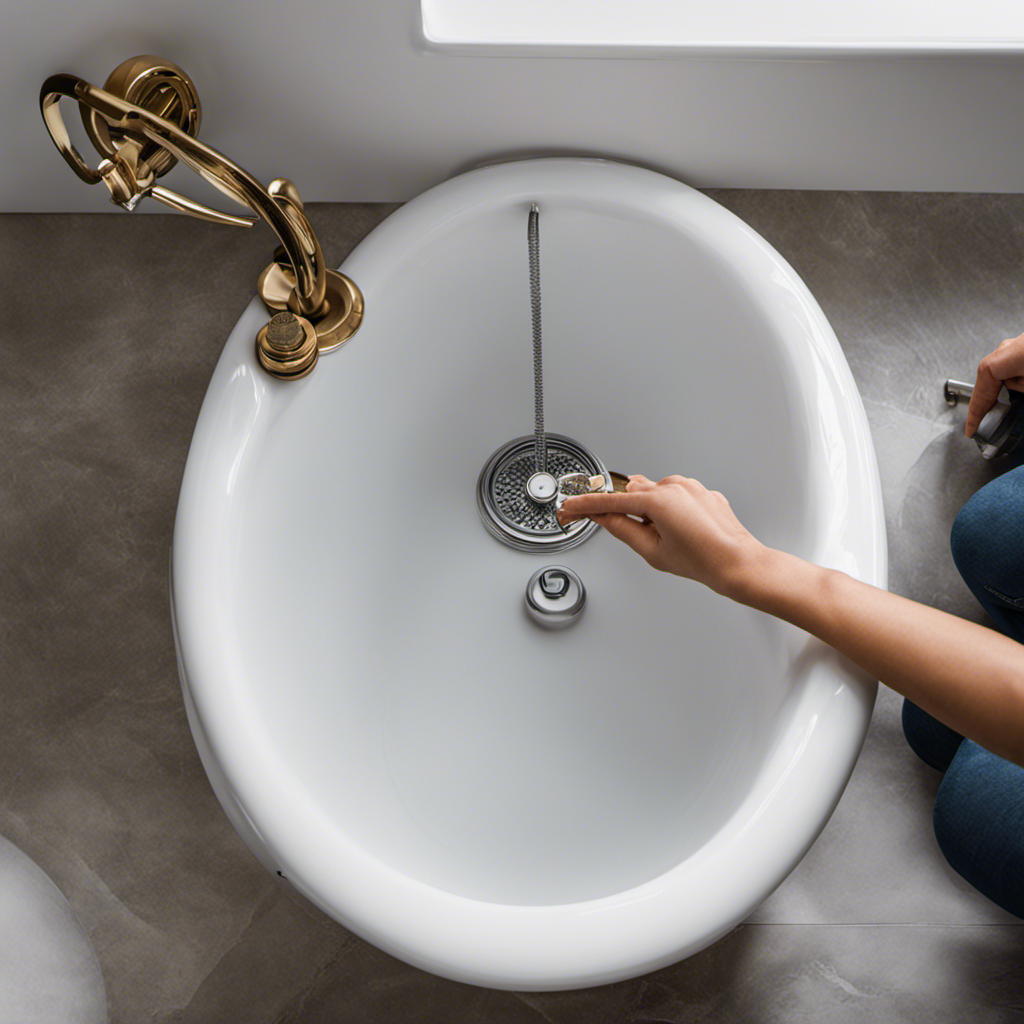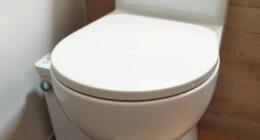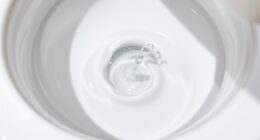I’ve finally found the solution to that pesky bathtub leak! If you’re tired of dealing with water pooling on your bathroom floor, then you’ve come to the right place.
In this article, I’ll walk you through the common causes of bathtub leaks, how to identify the source of the problem, and the DIY fixes you can try.
But don’t worry, if you’re not the handy type, I’ll also explain when it’s time to call in a professional plumber.
Say goodbye to leaks and hello to a dry bathroom floor!
Key Takeaways
- Common causes of bathtub leaks include worn-out or damaged seals, constant exposure to water and cleaning chemicals, and signs of water damage such as stains, warped flooring, and musty odors.
- DIY fixes for bathtub leaks include removing old caulking and applying fresh silicone caulk, replacing worn or damaged drain and overflow gaskets, inspecting and tightening connections on the bathtub spout and handles, and using temporary solutions until a professional can be called.
- Calling a professional plumber for assistance is important for persistent or emergency bathtub leaks as they have the necessary skills, experience, and specialized tools for accurate diagnosis and repairs, and can provide long-term solutions to prevent future leaks.
- To prevent future bathtub leaks, it is recommended to regularly inspect the bathtub for cracks or worn-out seals, apply a waterproof sealant to the seams and edges, clean the drain regularly to prevent clogs, and replace damaged caulk or grout to maintain a watertight seal.
Common Causes of Bathtub Leaks
One of the most common causes of bathtub leaks is a worn-out or damaged seal around the drain. This seal, made of rubber or silicone, is responsible for preventing water from seeping through the small gap between the drain pipe and the bathtub.
Over time, constant exposure to water and cleaning chemicals can cause the seal to deteriorate, resulting in leaks. Signs of water damage due to bathtub leaks include water stains on the ceiling or walls, warped flooring, and musty odors.
To address this issue, waterproofing solutions for bathtubs are available. These include applying a new sealant around the drain, using waterproofing membranes, or installing a bathtub liner.
Regular inspection and maintenance of the seal are essential to prevent leaks and costly water damage.
Identifying the Source of the Leak
To figure out where the problem is, you’ll need to carefully inspect the surrounding areas for any signs of water damage or dampness. Here are the steps to identify the source of a bathtub leak:
-
Check the caulking: Examine the caulking around the edges of the bathtub. Look for any cracks or gaps where water could be seeping through.
-
Inspect the overflow drain: Remove the overflow cover and check for any leaks or signs of water around the drain pipe.
-
Check the faucet connections: Inspect the connections between the faucet and the bathtub. Look for any loose or damaged parts that may be causing a leak.
-
Examine the drain stopper: Inspect the drain stopper mechanism for any signs of wear or damage that could be causing water to leak.
DIY Fixes for Bathtub Leaks
By following these simple steps, you can easily fix bathtub leaks yourself.
Water damage caused by bathtub leaks can be a real headache, but with a few temporary solutions, you can prevent further damage until a professional can be called.
First, identify the source of the leak by inspecting the caulking around the edges of the bathtub. If there are any gaps or cracks, remove the old caulking and apply a fresh bead of silicone caulk.
Next, check the drain and overflow gaskets for any signs of wear or damage. If necessary, replace these gaskets to ensure a watertight seal.
Lastly, inspect the bathtub spout and handles for any leaks. Tighten any loose connections or replace worn-out washers.
Calling a Professional Plumber for Assistance
If you’re experiencing a persistent issue with your bathtub, it’s time to call a professional plumber for assistance. While there are cost-effective alternatives for minor leaks that you can try yourself, some situations require the expertise of a trained plumber.
Here are four reasons why calling a professional plumber for emergency bathtub leak repairs is crucial:
-
Experience and knowledge: Plumbers have the necessary skills and experience to diagnose and fix complex bathtub leaks effectively.
-
Proper equipment: They have specialized tools and equipment to identify the source of the leak accurately and make the necessary repairs.
-
Safety: Plumbing work can be dangerous, especially when dealing with water leaks. Professional plumbers are trained to handle such situations safely.
-
Long-term solutions: A professional plumber can provide you with a long-term solution for your bathtub leak, ensuring that the problem doesn’t recur in the future.
When it comes to bathtub leaks, don’t hesitate to call a professional plumber for the best results.
Preventing Future Bathtub Leaks
Preventing future leaks in your bathtub requires regular maintenance and inspections. By following these bathtub maintenance tips and implementing effective waterproofing solutions, you can ensure a leak-free bathing experience. Here are some practical tips to keep your bathtub in optimal condition:
| Maintenance Tips | Waterproofing Solutions |
|---|---|
| Check for cracks or worn-out seals | Apply a waterproof sealant to the seams and edges of the bathtub |
| Clean the drain regularly | Install a high-quality bathtub liner or surround |
| Replace damaged caulk or grout | Use a waterproofing membrane on the walls surrounding the bathtub |
Regularly inspecting your bathtub for any signs of wear and tear, such as cracks or worn-out seals, is crucial to preventing leaks. Applying a waterproof sealant to the seams and edges of the bathtub can provide an added layer of protection. Additionally, installing a high-quality liner or surround and using a waterproofing membrane on the walls surrounding the bathtub can further enhance its waterproofing capabilities. By incorporating these maintenance tips and waterproofing solutions, you can effectively prevent future leaks in your bathtub.
Conclusion
In conclusion, fixing a bathtub leak can be a straightforward task with the right knowledge and tools. By identifying the source of the leak and utilizing DIY fixes like replacing the gasket or sealant, you can save both time and money.
However, if the leak persists or if you’re unsure about the cause, it’s best to call a professional plumber for assistance.
Remember, prevention is key, and taking proactive measures like regularly inspecting and maintaining your bathtub can help prevent future leaks.
Did you know that according to a study by the Environmental Protection Agency, a single leaky faucet can waste up to 3,000 gallons of water per year? So don’t underestimate the importance of fixing bathtub leaks promptly to conserve water and save on utility bills.
